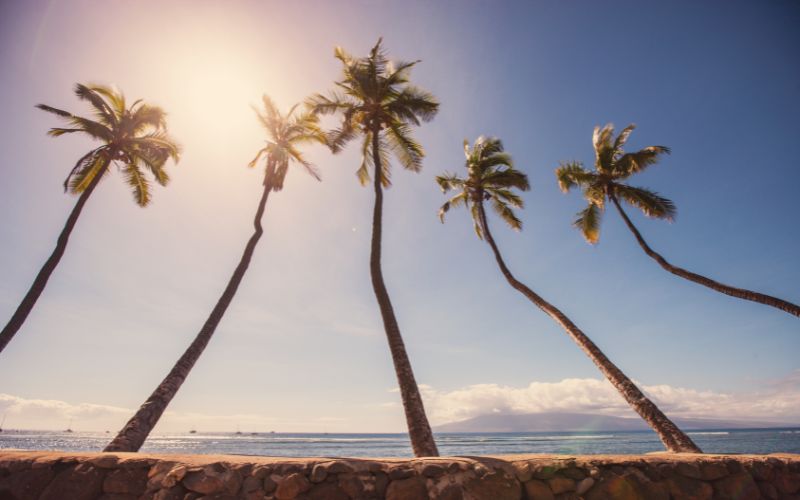
- Details
- By Kaili Berg
Lahaina Strong was born out of necessity in 2018 when Hurricane Lane led to a backfire, a controlled burn designed to remove flammable material and stop the wildfires from spreading, that destroyed around 20 homes. Jordan Ruidas, a Lahiana Native, mother of three, and one of the key organizers of the Lahiana Strong initiative, felt the need to help and started a fundraiser to support the victims.
“I was really young and didn’t think anything like this would happen again,” Ruidas told Native News Online.
Yet, five years later, a more catastrophic disaster struck, leading to the revival of Lahaina Strong. The movement, driven by the passion and dedication of community members like Ruidas, quickly mobilized to advocate for fire survivors who felt their needs were being overlooked.
“When the fires hit us again in 2023, on a much larger and more devastating scale, we realized that our community needed us more than ever. Lahaina Strong wasn’t just an idea anymore; it became a lifeline for so many of us,” Ruidas said.
The fires, which began on August 8, 2023, have been among the deadliest in the United States in recent history. As of September 2024, the fires have claimed the lives of over 115 people, with hundreds still unaccounted for.
The fire originated in the upcountry areas of Maui and quickly spread toward the historic town of Lahaina, driven by winds from Hurricane Dora, which passed south of the island. Within hours, large parts of Lahaina were engulfed in flames, leaving residents little time to escape. The fire burned for nearly two weeks before being fully contained, devastating approximately 2,200 acres.
Over 2,100 structures were damaged or destroyed, with the estimated cost of damages exceeding $5.5 billion. The fires were exacerbated by drought conditions and high winds from a nearby hurricane, creating a perfect storm that decimated large portions of the island.
As the world moves on from the initial shock of the fires, the 12,900 residents of Lahaina continue to struggle with the aftermath. According to the latest reports, around 60% of those affected by the fires are still without permanent housing, relying on temporary shelters, or staying with family and friends. The stress of displacement has led to a significant increase in mental health issues, with reports of anxiety, depression, and post-traumatic stress disorder (PTSD) on the rise.
“People are trying their hardest to move on, but many are still slipping through the cracks,” Ruidas said. “The world may have moved on, but we’re still here, still fighting every day to hold onto what we have left. We need help—real help—not just words or promises, but action.”
Ruidas says that the community faces many challenges, from the threat of foreclosure to the lack of access to basic services like healthcare. Mental health services remain a critical need, and some residents still struggle to make it to doctor’s appointments.
“People are still needing mental health services,” Ruidas said. “Our people are hurting, and the longer this goes on, the harder it will be to heal.”
Rebuilding Lahaina is a complex and multifaceted challenge. “The biggest struggle is that it’s not just one need,” Ruidas said. “It’s not just about housing; it’s about restoring every aspect of life that was lost.”
Ruidas said that Lahaina Strong has been advocating for safer transportation for students, addressing issues like the lack of a school bus for children relocated outside of Lahaina.
The community is also grappling with obstacles to housing, water access, and economic stability.
Lahaina’s limited water resources have been a long-standing issue, exacerbated by the fires. With 75% of the water being privately owned, the county struggles to meet the needs of rebuilding.
The lack of affordable housing adds another layer of difficulty. Before the fires, the median home price in Maui was already over $1 million, making it one of the most expensive housing markets in the country. The destruction of so many homes has only intensified the housing crisis.
The response from the local government has been slow, but there are signs of improvement. Ruidas noted that the government is beginning to work more closely with community groups like Lahaina Strong. However, the process is far from perfect, with delays in permit approvals and exorbitant fees hindering progress.
“For too long, they ignored us, but now they’re starting to realize that we’re not going anywhere,” Ruidas said. “We’re here, we’re organized, and we’re not backing down. We’ve been through too much to let them forget about us or push us aside.”
Ruidas noted that 45% of affected residents are still waiting for permits to rebuild, with many facing costs of $5,000 to $7,000 just for the approval process. These high costs are a significant barrier for families already stretched thin by the loss of their homes and livelihoods.
“It’s outrageous,” Ruidas said. “These are people who have lost everything, and now they’re being asked to pay thousands just to start rebuilding. It’s not right, and we’re fighting to make sure those fees are covered so people can focus on putting their lives back together.”
Lahaina Strong continues to provide vital support to those still displaced or struggling. The group recently launched a needs assessment survey to gather data on the community’s current situation, which will inform their advocacy efforts moving forward.
They are also exploring various initiatives, such as a Lahaina Strong Attendance Award to address school attendance issues and a potential Lahaina Strong market to promote local businesses.
Despite the challenges, Lahaina Strong has already made significant strides. One of their biggest successes has been changing the narrative around the community’s recovery.
“We came out with, ‘Okay, let’s regulate short-term rentals,’” Ruidas said. “For so long, the narrative was just about rebuilding—more homes, more development. But we said, ‘Let’s slow down. Let’s make sure we’re rebuilding in a way that serves our community, not just the tourists or the developers.’ And now, they can’t ignore us. They’re listening, and they’re starting to see that we were right all along.”
For those looking to support Lahaina Strong, Ruidas encourages people to follow the movement on social media and join its email list to stay informed about upcoming initiatives.
“That’s how we kind of build the army,” Ruidas said. “We’re all in this together, and the more people we have behind us, the stronger we are. This fight isn’t just for us—it’s for every community that’s ever been ignored, overlooked, or forgotten.”
More Stories Like This
Chilkat Indian Village Tells New Palmer Mine Owners They Are “Not Welcome” in Chilkat ValleyTribes, Coastal Group Ask Army Corps to Revoke Permit for Texas Export Terminal
Michigan Tribes Tell Supreme Court: Don’t Bail Out Enbridge
Alaskans Raise More Than $1 Million For Communities Devastated by Typhoon Halong
A True American Tale: Indigenous Rights vs. Corporate Greed
Help us tell the stories that could save Native languages and food traditions
At a critical moment for Indian Country, Native News Online is embarking on our most ambitious reporting project yet: "Cultivating Culture," a three-year investigation into two forces shaping Native community survival—food sovereignty and language revitalization.
The devastating impact of COVID-19 accelerated the loss of Native elders and with them, irreplaceable cultural knowledge. Yet across tribal communities, innovative leaders are fighting back, reclaiming traditional food systems and breathing new life into Native languages. These aren't just cultural preservation efforts—they're powerful pathways to community health, healing, and resilience.
Our dedicated reporting team will spend three years documenting these stories through on-the-ground reporting in 18 tribal communities, producing over 200 in-depth stories, 18 podcast episodes, and multimedia content that amplifies Indigenous voices. We'll show policymakers, funders, and allies how cultural restoration directly impacts physical and mental wellness while celebrating successful models of sovereignty and self-determination.
This isn't corporate media parachuting into Indian Country for a quick story. This is sustained, relationship-based journalism by Native reporters who understand these communities. It's "Warrior Journalism"—fearless reporting that serves the 5.5 million readers who depend on us for news that mainstream media often ignores.
We need your help right now. While we've secured partial funding, we're still $450,000 short of our three-year budget. Our immediate goal is $25,000 this month to keep this critical work moving forward—funding reporter salaries, travel to remote communities, photography, and the deep reporting these stories deserve.
Every dollar directly supports Indigenous journalists telling Indigenous stories. Whether it's $5 or $50, your contribution ensures these vital narratives of resilience, innovation, and hope don't disappear into silence.
 The stakes couldn't be higher. Native languages are being lost at an alarming rate. Food insecurity plagues many tribal communities. But solutions are emerging, and these stories need to be told.
The stakes couldn't be higher. Native languages are being lost at an alarming rate. Food insecurity plagues many tribal communities. But solutions are emerging, and these stories need to be told.
Support independent Native journalism. Fund the stories that matter.
Levi Rickert (Potawatomi), Editor & Publisher

